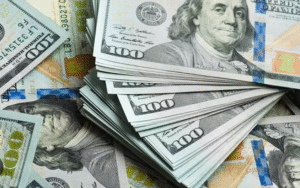$GBPUSD
#Forex #Pound #USD #Sterling #CurrencyMarkets #UK #Inflation #BoE #Dollar #InterestRates #FXTrading #Economy
Sterling has surged past the $1.30 mark for the first time since November, signaling renewed confidence in the British currency amid shifting economic conditions. The pound has been showing resilience against the dollar this year, buoyed by persistent inflationary pressures in the UK and a broad retreat in the US dollar. Investors have responded to expectations that the Bank of England (BoE) may need to maintain higher interest rates for a longer period, supporting demand for the pound. Meanwhile, the US dollar has weakened due to growing speculation that the Federal Reserve could pivot toward rate cuts in response to easing inflationary pressures in the US economy. These contrasting monetary policy expectations have helped fuel sterling’s rally.
The UK economy has been grappling with stubbornly high inflation, which remains above the BoE’s 2% target. Recent data has suggested inflationary pressures are proving difficult to tame, prompting concerns that rate cuts may not come as soon as markets had initially anticipated. A higher-for-longer interest rate environment typically strengthens a currency as higher yields make sterling-denominated assets more attractive to investors. This sentiment has contributed to the pound’s rally, as traders continue to weigh the BoE’s policy stance against that of the Federal Reserve. Additionally, resilient UK labor market data and strong wage growth have fueled expectations that inflation may remain elevated, further reinforcing the case for sustained higher interest rates.
On the other side of the equation, the US dollar has come under pressure as investors assess the Federal Reserve’s next moves. Recent economic data out of the US has pointed to signs of cooling inflation, strengthening expectations that the Fed could start pivoting toward monetary easing in the coming months. While the US central bank has remained cautious, any hint of dovish policy adjustments has weighed on the dollar. With markets increasingly pricing in potential rate cuts later this year or early next year, the greenback has struggled to maintain its strength. The dollar’s retreat has provided additional momentum for sterling’s recovery, particularly as the interest rate differential between the UK and the US remains a key driver for forex traders.
Looking ahead, market movements in the GBP/USD pair will largely hinge on central bank policy signals, macroeconomic data, and broader risk sentiment. If UK inflation remains persistently high, the BoE may have to maintain elevated rates, which could further bolster the pound. However, any signs of an economic slowdown in the UK could dampen bullish sentiment for sterling. Meanwhile, any indications of a more aggressive policy shift from the Federal Reserve could limit the dollar’s weakness, affecting GBP/USD’s trajectory. As traders position themselves for further moves, the central bank outlooks on both sides of the Atlantic will play a crucial role in determining whether sterling can sustain its climb or face renewed volatility.











Comments are closed.